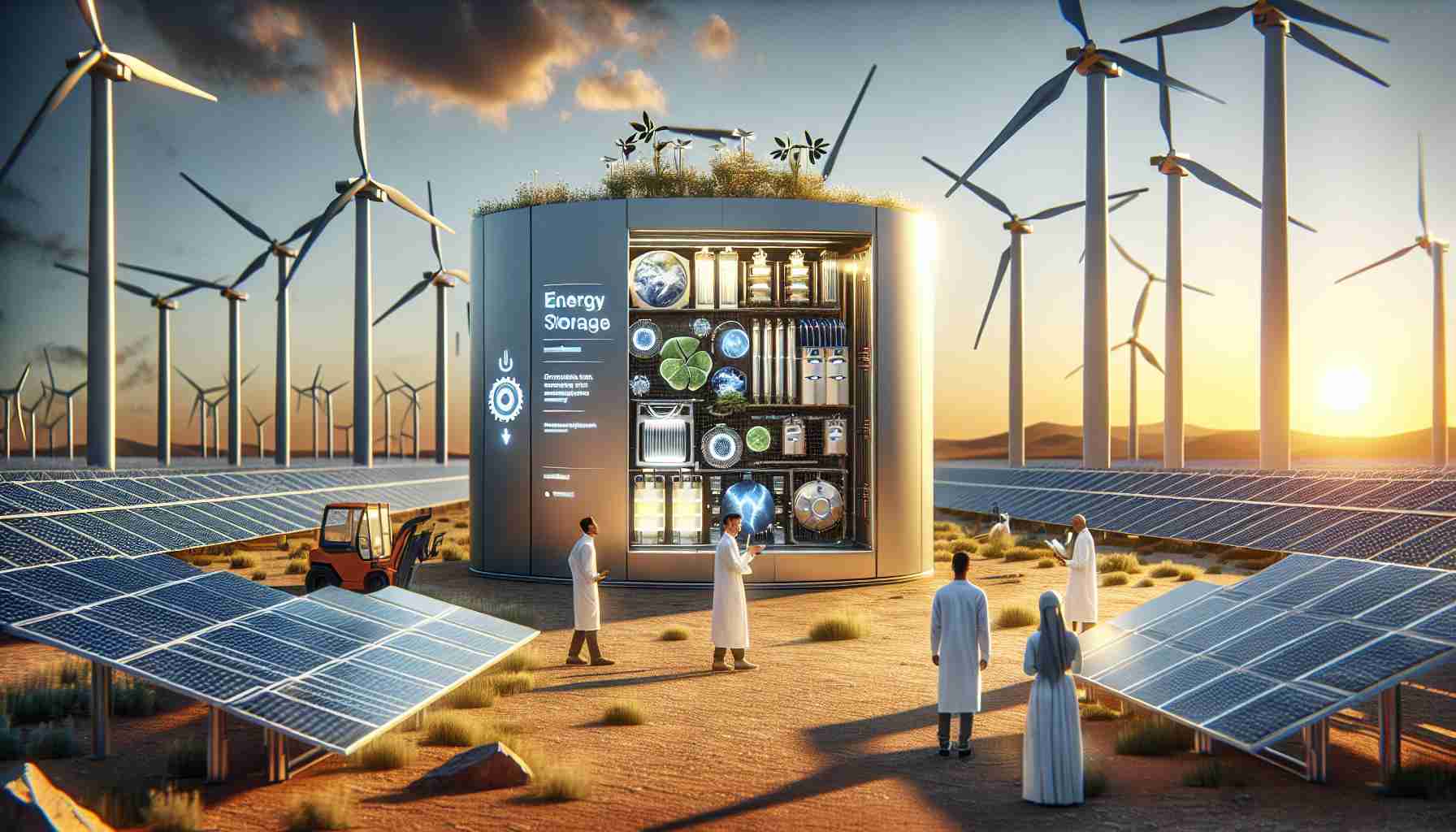
Exploring Innovative Solutions for Renewable Energy Grids
The transition to renewable energy sources such as solar and wind is prompting a crucial need for effective energy storage solutions. As the clean energy market expands, new technologies are emerging to tackle the challenges of energy variability, thereby ensuring that electricity supply remains consistent and reliable.
With the growing emphasis on renewable energy, energy storage has been identified as a potential trillion-dollar industry. Experts emphasize that enhancing storage capacity is essential to support the integration of intermittent energy sources, which fluctuate due to factors like weather and time of day. This shift is increasingly vital as electric vehicle adoption rises, straining existing electrical grids designed primarily for fossil fuels.
Innovative storage solutions include lithium-ion batteries, which dominate today’s market but face limitations due to environmental concerns. Researchers are exploring alternative battery technologies. Thermal storage options, utilizing materials like salt and brick, offer a straightforward method to retain heat. Mechanical systems that convert excess energy into kinetic forms, such as flywheels and gravity-driven technologies, present cost-effective alternatives as well.
Additionally, pumped hydro systems and hydrogen storage are pivotal in the discussion, providing methods to store energy over long periods. These diverse approaches highlight the urgent need for flexibility in energy storage to address the growing demands of a cleaner energy future. As innovation continues, the path to a stable and sustainable energy grid promises exciting developments ahead.
The Future of Renewable Energy Storage: Innovations and Insights
Understanding the Shift to Renewable Energy Storage
As the global pursuit of renewable energy intensifies, the focus is not just on generating clean power but also on how to store it effectively. The energy market is undergoing a massive transformation driven by factors such as increasing electric vehicle (EV) adoption, growing energy demands, and the need to mitigate climate change impacts. This has opened doors to innovative solutions aimed at enhancing energy grid reliability and sustainability.
The Trillion-Dollar Opportunity
With estimates suggesting that energy storage could become a trillion-dollar industry, stakeholder investments are surging. Experts are emphasizing the necessity for technological advancements to improve storage systems, which are critical for integrating renewable energy sources like solar and wind, both of which can be unpredictable due to their dependence on weather conditions.
Innovative Energy Storage Solutions
1. Lithium-Ion Batteries:
Currently the most prevalent technology in the market, lithium-ion batteries hold a significant share of the energy storage landscape. However, their environmental impact and resource constraints call for an urgent shift towards sustainable alternatives.
2. Alternative Battery Technologies:
Researchers are actively investigating alternative storage solutions, such as:
– Solid-State Batteries: Safer and more efficient, these batteries utilize solid electrolytes.
– Flow Batteries: They allow energy to be stored in liquid electrolytes, providing scalability and longevity.
3. Thermal Storage:
Utilizing materials like salt, thermal storage systems can capture excess heat for later use, offering a reliable solution for storing energy that can be harnessed when renewable generation dips.
4. Mechanical Systems:
Technologies like flywheels and gravitational energy storage convert excess energy into kinetic energy, providing an efficient means to balance energy loads.
5. Pumped Hydro Storage:
This well-established method involves storing energy by moving water between two reservoirs at different elevations, making it a key player for large-scale energy storage.
6. Hydrogen Energy Storage:
By using excess renewable energy to produce hydrogen through electrolysis, this method allows for the storage of energy in a storable and transportable form, thus extending storage capabilities significantly.
Pros and Cons of Energy Storage Technologies
– Pros:
– Enhances grid stability.
– Facilitates the transition to renewable energy.
– Reduces reliance on fossil fuels.
– Cons:
– High initial costs for certain technologies.
– Environmental impact concerns, particularly with traditional battery systems.
– Energy losses during storage and retrieval processes.
Use Cases for Energy Storage
Energy storage systems are crucial for:
– Supporting home energy management systems, allowing homeowners to utilize stored energy during peak pricing periods.
– Enhancing the reliability of microgrids in rural areas and disaster-prone regions.
– Increasing the efficiency of solar farms by enabling energy to be stored for use at night or during cloudy days.
Market Analysis and Trends
The energy storage market is poised for exponential growth, driven by ongoing investments and technological advancements. The International Energy Agency (IEA) projects significant increases in new storage capacities, particularly as countries push towards net-zero emissions targets.
Future Predictions
As technology continues to evolve:
– We can expect more compact and efficient energy storage solutions.
– Vehicles may incorporate more advanced battery systems, further stimulating the energy storage market.
– A shift towards more sustainable materials in battery production is anticipated, prioritizing eco-friendly practices.
Innovations and Sustainability Aspects
Companies and research institutions are now focusing on:
– Developing recyclable and biodegradable battery components.
– Improving the energy density of batteries to reduce the overall material input required for production.
As we venture further into this transformative era, the quest for effective energy storage solutions will play a pivotal role in achieving a sustainable and resilient energy grid.
For more in-depth information on renewable energy and storage solutions, visit Renewable Energy World.



